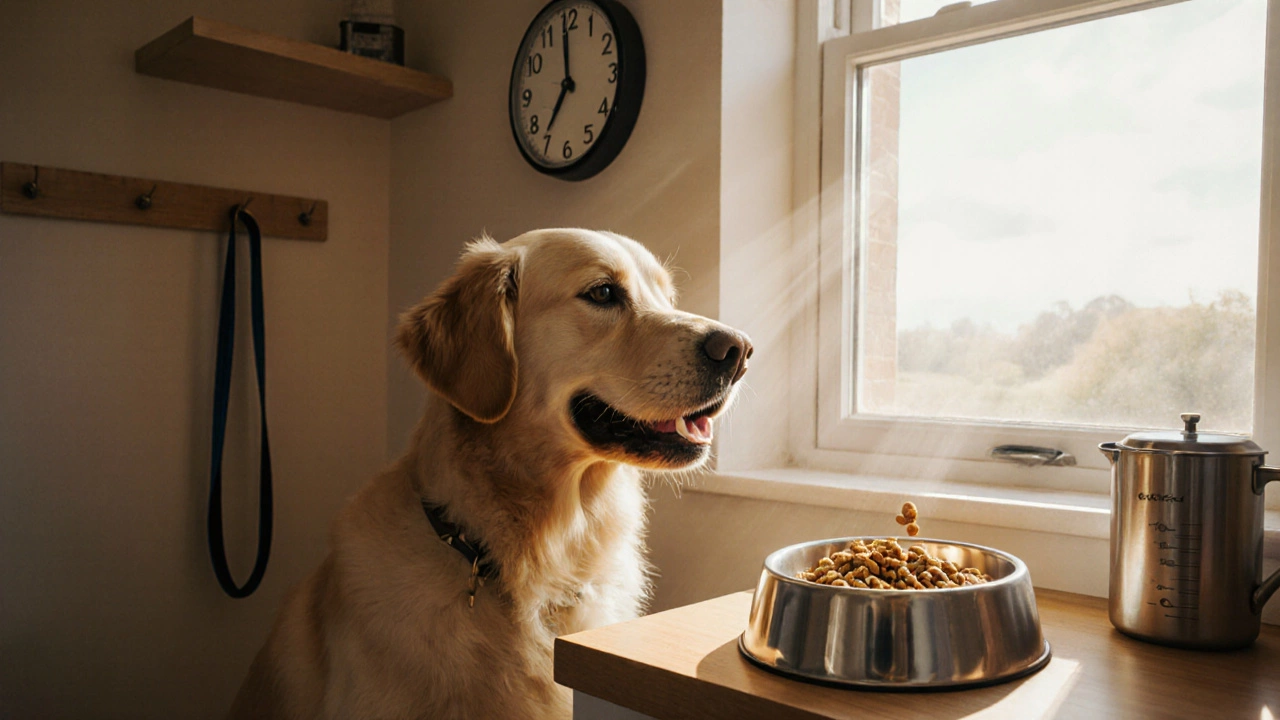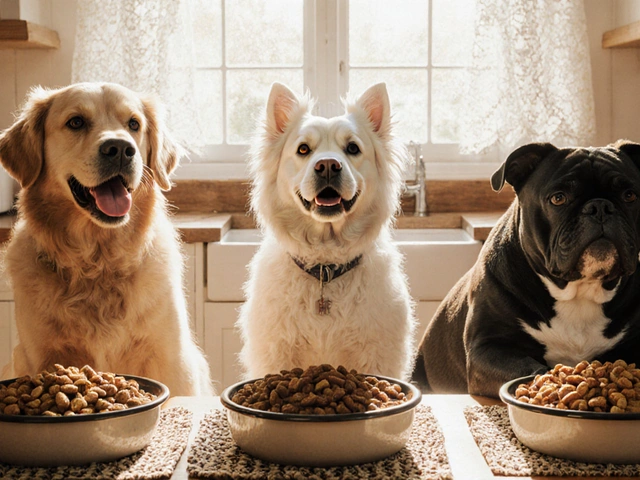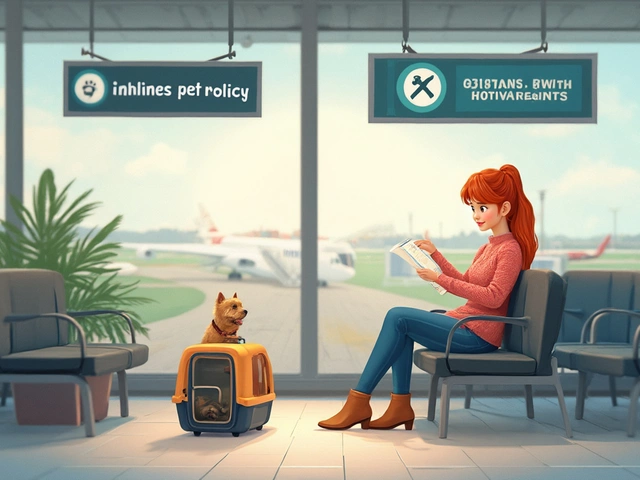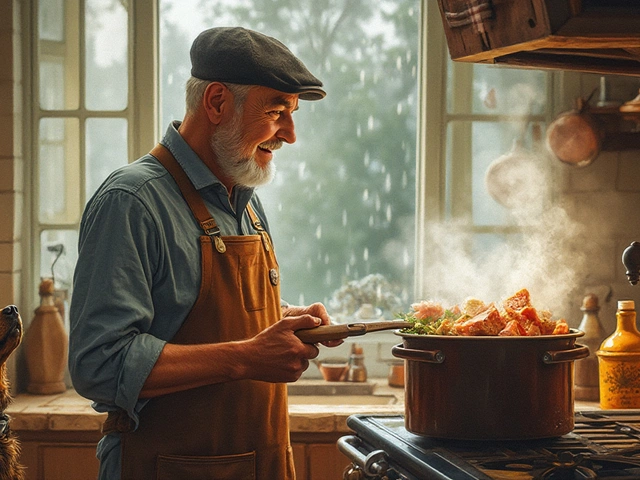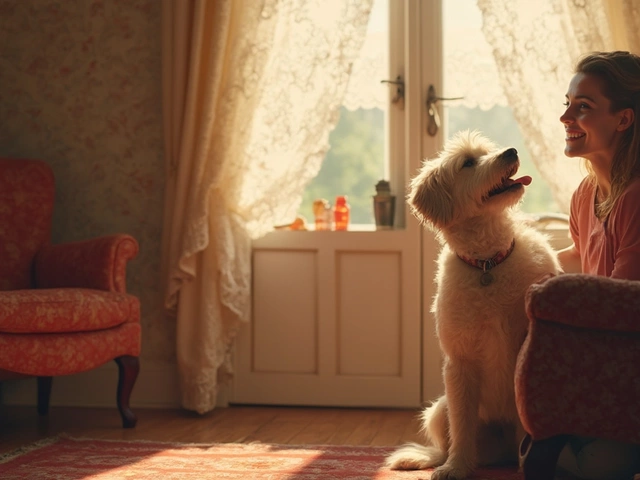Feeding your dog at the right time isn’t just about convenience-it affects their digestion, energy levels, and even their behavior. Many dog owners wonder: should I feed my dog in the morning or evening? The truth? There’s no single answer that works for every dog. But there are clear patterns, science-backed reasons, and practical tips that can help you pick the best schedule for your pup.
How Dog Digestion Works
Dogs digest food differently than humans. Their stomachs empty in about 4 to 6 hours after eating, depending on the food type and their age. A high-protein meal like chicken and rice clears faster than a fatty kibble. That means if you feed your dog at 7 a.m., they’ll likely need to go out again by 11 a.m. or noon. If you feed them at 6 p.m., they’ll probably need to go out by 10 p.m. or 11 p.m.Feeding too early in the morning can lead to long gaps between meals. Many dogs end up pacing, whining, or even chewing on furniture because they’re hungry and bored. Feeding too late at night can cause nighttime bathroom trips, which is a problem if you’re a light sleeper or have a puppy who can’t hold it.
Why Morning Feeding Has Advantages
Feeding your dog in the morning gives them energy for the day. Most dogs are active in the morning-whether it’s a walk, playtime, or just exploring the garden. A full belly helps them stay focused and calm during training or walks.It also makes house training easier. Puppies and older dogs often need to go out within 20 to 30 minutes after eating. If you feed at 7 a.m., you can take them out right after, then again around lunchtime. This creates a predictable routine that reduces accidents indoors.
Many vets in the UK recommend morning feeding for dogs with sensitive stomachs. The reason? Their digestive system gets a head start during daylight hours. It’s easier for their body to process food when they’re active and their metabolism is running.
Why Evening Feeding Makes Sense Too
Evening feeding works well for dogs with high energy or those who get anxious when left alone. If your dog gets restless in the afternoon or starts barking when you leave for work, feeding them later helps them settle down before bedtime.It also fits better with family routines. If you’re home after work and want to spend time with your dog before bed, feeding them then turns dinner into bonding time. You can give them a slow feeder toy or a stuffed Kong while you eat-this keeps them mentally stimulated and reduces begging at the table.
For older dogs or those with arthritis, evening feeding can help them rest better. A full stomach can ease joint discomfort by keeping their body warm and their blood sugar stable through the night.
Twice-Daily Feeding: The Gold Standard
Most veterinarians agree that feeding adult dogs twice a day-once in the morning and once in the evening-is the healthiest routine. It’s not about choosing morning OR evening. It’s about using both.Here’s how it works in practice:
- Morning meal (7-8 a.m.): 50% of daily food. Helps with energy, digestion, and bathroom routine.
- Evening meal (5-6 p.m.): 50% of daily food. Prevents overnight hunger, reduces nighttime restlessness.
This schedule matches the natural rhythm of most households. It gives your dog two clear cues: “time to eat” and “time to go out.” Puppies under six months need three meals a day, but by one year old, most can switch to two.
Studies from the Royal Veterinary College in London show that dogs fed twice daily have better blood glucose control and lower rates of bloat compared to those fed once a day. Bloat, or gastric dilatation-volvulus (GDV), is a life-threatening condition that’s more common in large-breed dogs like German Shepherds and Great Danes. Feeding smaller, more frequent meals reduces the risk.
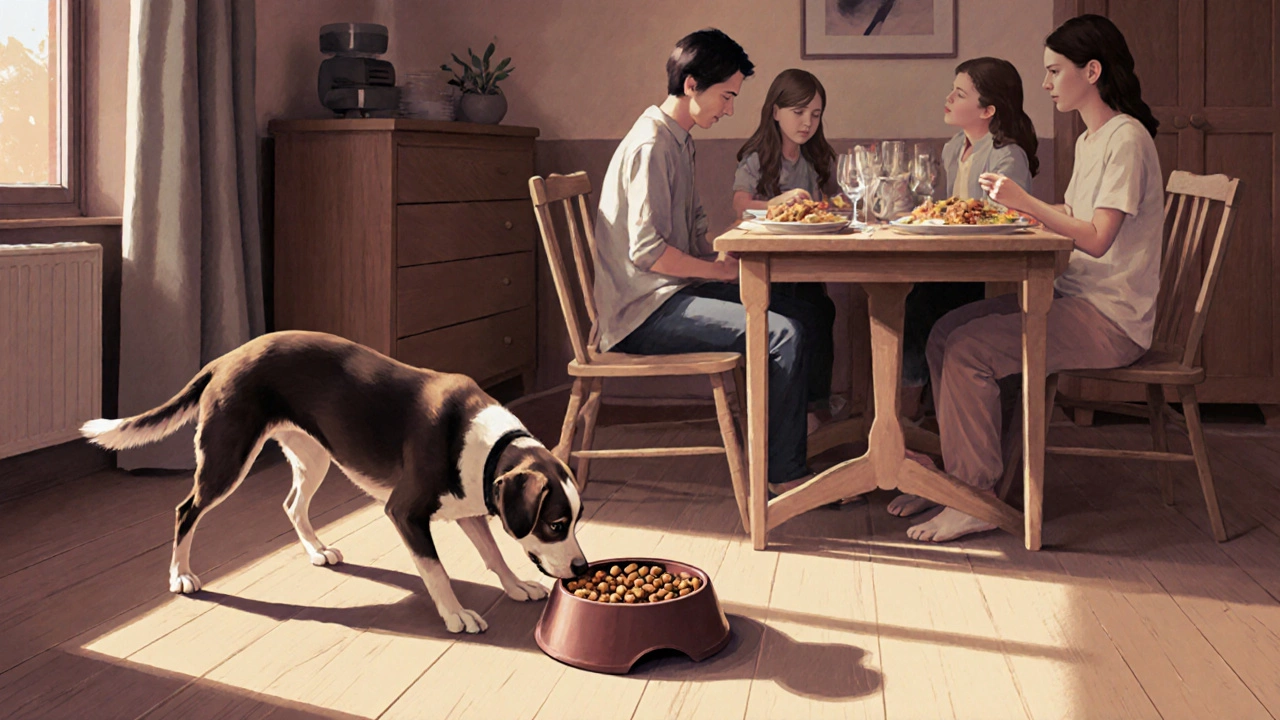
What About One Meal a Day?
Some owners feed once a day because it’s easier. Maybe they’re busy. Maybe they think it’s more “natural.” But unless your vet specifically recommends it, one meal a day isn’t ideal.Here’s why:
- Dogs are more likely to overeat in one sitting, leading to bloating or vomiting.
- Hunger can trigger anxiety or aggression in some dogs.
- It’s harder to notice changes in appetite. If your dog skips a meal, you’ll know right away. If they eat once a day and skip it, you might not realize something’s wrong until it’s serious.
There are exceptions. Some working dogs or very active breeds may do fine on one large meal. But even then, most experts still recommend splitting the portion.
Timing Tips Based on Dog Type
Not all dogs are the same. Your dog’s age, breed, activity level, and health all matter.- Puppies (under 6 months): Feed three times a day-morning, lunch, and early evening. Their tiny stomachs can’t hold much, and they burn energy fast.
- Adult dogs (1-7 years): Two meals a day, 8-12 hours apart. Best times: 7 a.m. and 5 p.m.
- Senior dogs (8+ years): Two smaller meals. Consider feeding earlier in the evening if they have trouble getting up at night.
- Large breeds (Great Dane, Saint Bernard): Avoid feeding right before or after exercise. Feed at least 2 hours before a walk or play session to reduce bloat risk.
- Brachycephalic breeds (Bulldogs, Pugs): Feed slowly. Use a slow feeder bowl. Their flat faces make eating fast and messy, which can cause choking or indigestion.
Signs Your Feeding Schedule Isn’t Working
If your dog is doing any of these, it might be time to adjust their meal times:- Constantly begging for food between meals
- Having accidents in the house at night
- Acting overly tired or sluggish after meals
- Throwing up bile in the morning (empty stomach irritation)
- Refusing food at the usual time
These aren’t just behavioral issues-they’re signals. Vomiting bile in the morning? That’s often a sign they’re going too long without food. Nighttime accidents? Maybe their last meal was too late. Refusing food? Could be a medical issue, or just a schedule mismatch.
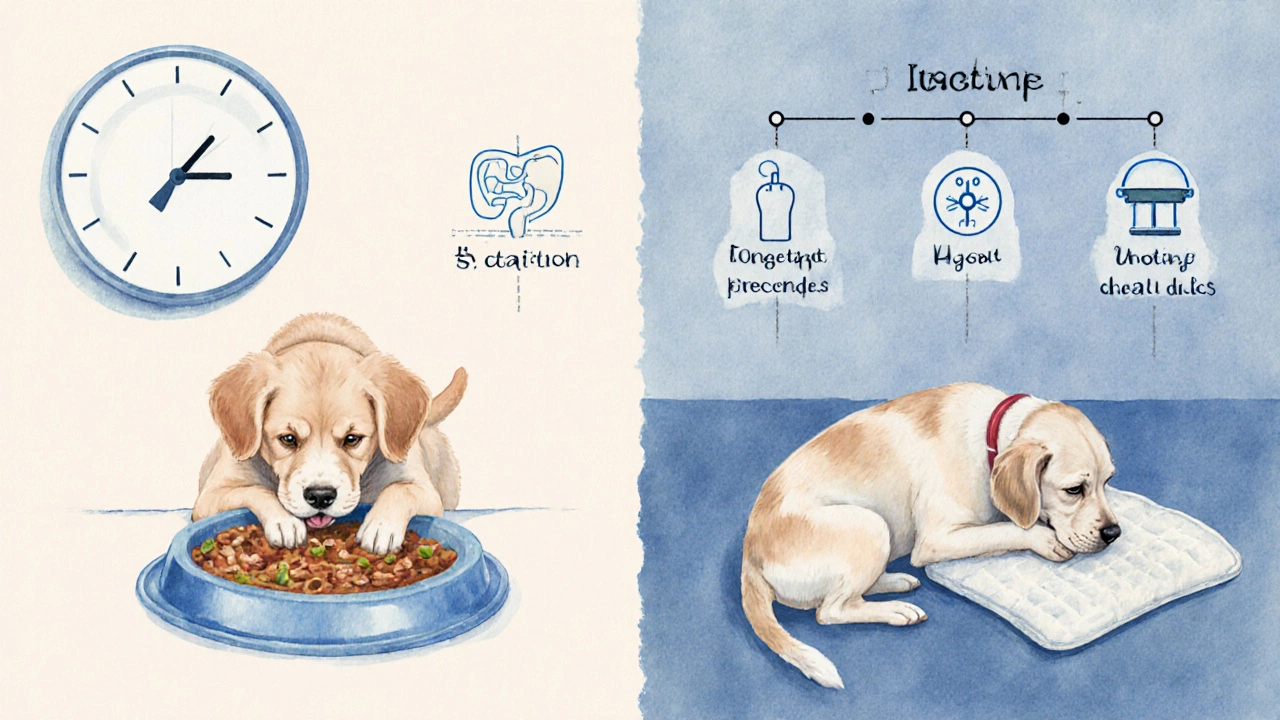
How to Stick to a Routine
Consistency is everything. Dogs thrive on predictability. If you feed them at 7 a.m. one day and 6:30 p.m. the next, they’ll get confused. Their internal clock gets thrown off. That leads to stress, anxiety, and digestive upset.Set alarms on your phone. Put a sticky note on the fridge. Tell everyone in the house: “We feed at 7 a.m. and 5 p.m. No exceptions.” Even on weekends. Even if you’re on holiday.
If you travel, bring their food and stick to the same times-even if you’re in a different time zone. Dogs don’t care about daylight savings. They care about routine.
What About Treats and Snacks?
Treats aren’t meals. But they still count toward daily calories. If you give your dog 10 treats a day, you’re adding extra calories. That can lead to weight gain.Here’s a simple rule: treats should make up no more than 10% of their daily intake. So if your dog eats 500 calories a day, treats should be 50 calories or less.
Use treats during training, not as meal replacements. And avoid giving them right before bed-it can cause restlessness or digestive issues.
Final Answer: Morning and Evening
The best time to feed a dog isn’t morning or evening. It’s both. Two meals a day, evenly spaced, gives your dog the energy they need, supports their digestion, and keeps their behavior steady.For most dogs in the UK, feeding at 7 a.m. and 5 p.m. works perfectly. It aligns with human routines, gives them time to digest before bed, and helps with house training. But if your schedule is different, adjust the times-just keep them consistent.
Don’t overthink it. Watch your dog. If they’re happy, healthy, and regular in their bathroom habits, you’re doing it right.
Can I feed my dog only once a day?
You can, but it’s not recommended for most dogs. One meal a day increases the risk of bloat, hunger-related anxiety, and makes it harder to spot health issues early. Most adult dogs do better with two meals-morning and evening. Only consider one meal if your vet advises it for medical reasons.
Should I feed my dog before or after a walk?
Wait at least 30 to 60 minutes after a walk before feeding. Feeding right after exercise increases the risk of bloat, especially in large breeds. If you walk your dog in the morning, feed after the walk. If you walk in the evening, feed before the walk so they have time to digest.
Why does my dog vomit yellow bile in the morning?
Yellow bile in the morning usually means their stomach has been empty for too long. Bile irritates the lining when there’s no food to buffer it. This is common in dogs fed only once a day or with long gaps between meals. Switching to two meals-especially adding a small morning snack-often fixes it.
Is it bad to feed my dog late at night?
Feeding too late-after 8 p.m.-can cause nighttime bathroom trips, especially in puppies or older dogs. It may also disrupt sleep for both you and your dog. If you must feed late, keep the portion small and avoid rich or fatty foods. Aim to finish meals at least 2-3 hours before bedtime.
How do I know if my dog is hungry or just begging?
Begging is learned behavior. Hunger is physical. A genuinely hungry dog may pace, lick their lips, or stare at their bowl. A begging dog will follow you around, whine, or paw at you-even right after eating. Stick to your schedule. If they’re healthy and maintaining weight, they’re not truly hungry.

